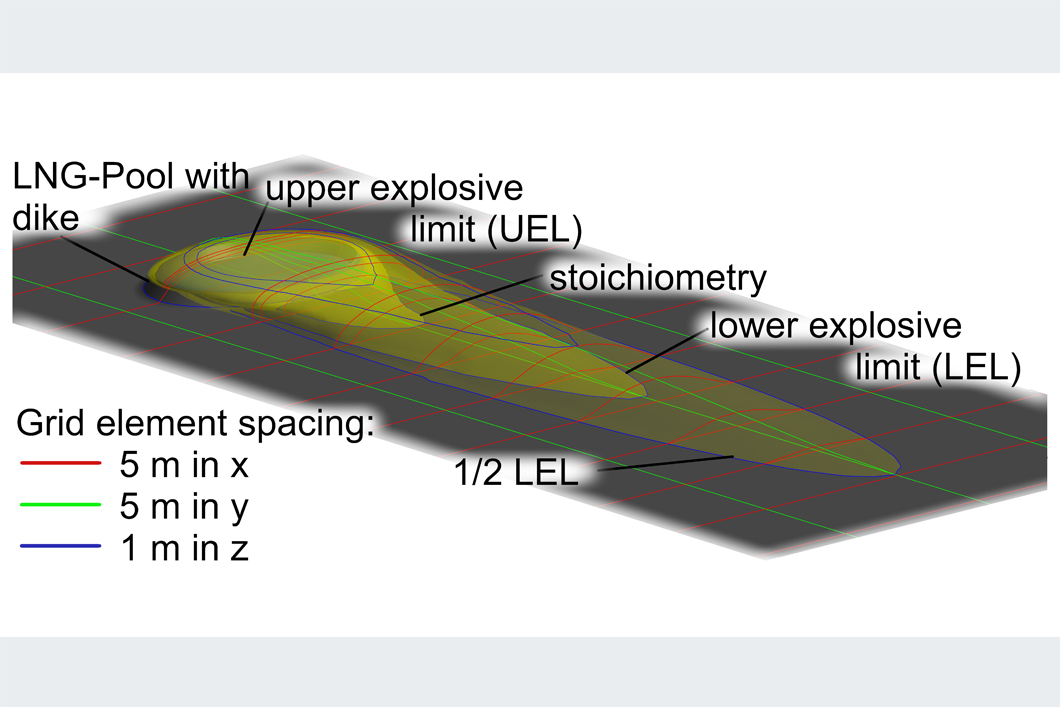
Iso surfaces of LNG-Gas concentrations in free field, 100 s after the begin of the LNG evaporation in a dike bounded LNG-pool
Source: BAM Department Safety of Structures
Liquefied Natural Gas (LNG) is on the advance to establish itself as a new energy carrier for heavy and long-distance traffic on the road. The number of new registrations and fuel stations in Europe and Germany has increased steadily in recent years. Compared to the dominant energy carrier diesel in this transport sector, LNG is characterized by lower CO2 and NOx emissions and can be produced regeneratively from biomethane or synthetic methane. Next to its advantages, LNG also poses new questions for personal and infrastructure safety, in consequence of its low temperature of approx. -161°C and an explosion of the gas phase.
Appropriate CFD-models can be used for observing risks, based on incidents with LNG in the road traffic. The investigation of this with ANSYS Fluent was the focus of this paper. For this purpose, a model variant study and a validation with experimental data were carried out. In the study, the transient propagation behavior of LNG gas in air was examined with 12 model variants, in which parameters influencing temperature and turbulence were varied. The validation was based on experiments of the ‘LNG Safety Program Phase II‘, which were done to research the evaporation of LNG on land and the subsequent dispersion of LNG gas in the air.
As a result, it was shown that the dispersion of LNG-vapor was most strongly influenced by the choice of the turbulence boundary conditions at the borders of the observed domain, followed by the choice of the turbulence model. The transient results of the model variant, which had made the best predictions compared to the experimental data, were used for the analysis of the dispersion in the experiment and also for the analysis of the influence of the LNG vapor composition on the dispersion. The results show that the mixture of LNG-vapor and the air in the free field is cooler than the ambient air and spreads like a heavy gas on the ground due to the temperature.
Dispersion modeling of LNG-Vapor on land – A CFD-Model evaluation study
Robert Eberwein, Andreas Rogge, Frank Behrendt, Christian Knaust
published in Journal of Loss Prevention in the Process Industries, Vol. 65, 104116, 2020
BAM, Department Safety of Structures


